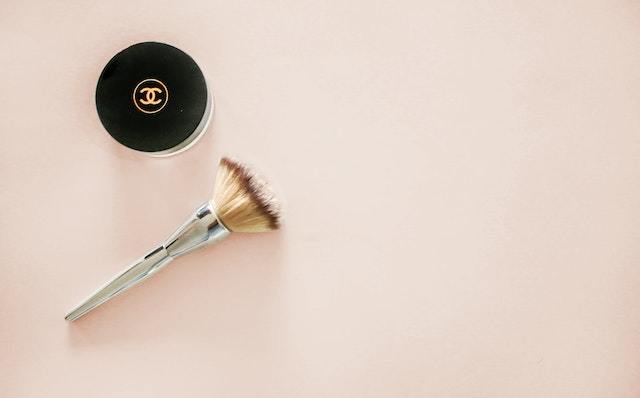Picture this: a luxurious shopping spree, and the decision comes down to Chanel vs. Saint Laurent.
In an era where fashion enthusiasts are spoiled for choice, it’s fascinating to delve into the world of luxury brands and explore their unique characteristics.
This Chanel vs. Saint Laurent case study will provide you with an in-depth analysis of these two iconic fashion houses – from their origins and aesthetics to controversies surrounding intellectual property rights.
Discover how pricing strategies impact customer loyalty, as well as which brand appeals more to younger demographics.
We’ll also discuss recent developments such as Chanel’s controversial price increase decision and how competition between these industry giants drives innovation within the sector.
So, join us on this stylish journey through time that is our Chanel vs. Saint Laurent case study!
Table of Contents:
- The Origins of Chanel and Saint Laurent
- Intellectual Property Controversy: Chanel vs. Saint Laurent
- Pricing Strategies & Customer Loyalty: Chanel vs. Saint Laurent
- Target Audiences & Brand Aesthetics: Who Wears What?
- Recent Developments & Future Outlook: The Fashion Battle Continues.
- Target Audiences & Brand Aesthetics: Chanel vs. Saint Laurent
- Recent Developments & Future Outlook
- FAQs in Relation to Chanel Vs. Saint Laurent Case Study
- Conclusion
The Origins of Chanel and Saint Laurent
Let’s take a look back at the beginnings of two French fashion powerhouses, Chanel and Saint Laurent, to understand how they have revolutionized haute couture. These luxury brands have shaped haute couture in their own unique ways.
First up, Gabrielle “Coco” Chanel. In 1910, she opened her first boutique in Paris with a vision to create clothing for bold women who dared to break free from societal norms. Coco introduced innovative designs like the little black dress, tweed suits, and costume jewelry – all staples in modern wardrobes today.
Fast forward to 1983, when Karl Lagerfeld took over as creative director at Chanel. Lagerfeld successfully revitalized the brand while preserving Coco’s original essence. His work transformed it into one of the most sought-after luxury brands globally – even inspiring other designers such as Yves Saint Laurent himself.
Speaking of Saint Laurent, let’s dive into his beatnik style revolution. Born in Algeria in 1936, Yves Henri Donat Mathieu-Saint-Laurent worked under Christian Dior before launching his own eponymous label in 1961. Saint Laurent pushed boundaries with edgy gender-neutral designs like tuxedo jackets for women and beatnik-inspired clothing. His innovative approach earned him a reputation as one of the most influential designers in fashion history.
Now that we’ve covered their origins, let’s delve into some controversies and strategies that set these two French powerhouses apart.
Intellectual Property Controversy: Chanel vs. Saint Laurent
Let’s dive into the recent drama between two fashion giants, Chanel and Saint Laurent.
In a surprising turn of events, these luxury brands found themselves in an intellectual property dispute over tweed suits featured in YSL’s fall 2023 collection.
But what sparked this controversy?
Famous Tweeds & The Importance of Intellectual Property Rights
- Coco Chanel was known for her love affair with tweed fabric, which has been synonymous with her brand since the 1920s. It remains one of Chanel’s most recognizable signatures today.
- Karl Lagerfeld continued this legacy, adding his own twist to the iconic tweed suits during his tenure at Chanel.
- Yves Saint Laurent, on the other hand, worked to push boundaries and create edgy designs that challenged traditional gender norms. His take on tweed added a modern touch to this classic fabric.
The joint declaration by Chanel and YSL is a reminder of the necessity for luxurious labels to safeguard their intellectual property rights in order to retain exclusivity and branding.
Industry observers were surprised by the joint statement, but it highlights both companies’ dedication towards preserving creativity while respecting each other’s unique contributions to haute couture fashion.
Innovation thrives when designers are free to create without fear of imitation – so let’s hope these two French icons continue leading the way.
Pricing Strategies & Customer Loyalty: Chanel vs. Saint Laurent
Let’s talk numbers, shall we? When it comes to upscale labels like Chanel and Saint Laurent, the way they price their products is an essential element for keeping them exclusive and drawing in the right customers. Dive with me into their world of handbags.
Comparing Price Points Between $1500-$5000 Range Bags
A quick glance at both brands’ offerings reveals that Chanel bags typically start around $3000, while Yves Saint Laurent offers more accessible options starting from $1500. This difference in price points can be attributed to each brand’s unique approach towards luxury fashion.
Impact of Controlling Manufacturing on Product Value
Quality control is key for these high-end labels. Chanel handbags, known for their impeccable craftsmanship, are produced exclusively by the company itself – ensuring top-notch quality and justifying higher prices. In contrast, Saint Laurent bags, although still well-made, may not have the same level of manufacturing control as their rival – which could explain lower price tags without compromising style or durability too much.
Value-Added Services Like SPA Service
Now, let’s talk about the cherry on top: value-added services. Some luxury brands offer exclusive services like SPA service for their handbags – a cleaning and refurbishing process that helps maintain the bag’s pristine condition over time. The addition of extra services such as a SPA for handbags can not only foster customer loyalty but also increase the worth of these sought-after pieces, making them even more desirable in the long run.
Target Audiences & Brand Aesthetics: Who Wears What?
As we know, fashion is all about self-expression and individuality. Coco Chanel’s vision for bold women breaking free from societal norms has resonated with generations of strong females who appreciate timeless elegance and sophistication – think Chanel-clad celebrities. Yves Saint Laurent, on the other hand, caters to those seeking edgier designs that push boundaries in gender-specific fashion – attracting younger demographics who are drawn towards its avant-garde approach.
Recent Developments & Future Outlook: The Fashion Battle Continues.
In recent news, Chanel made headlines by deciding to increase product costs amidst an already challenging economic climate. The question remains whether this controversial move will impact brand loyalty or sales figures in any significant way.
Chanel and Saint Laurent have different pricing strategies, with Chanel offering higher-priced bags due to their exclusive manufacturing control while Saint Laurent offers more accessible options. Both brands offer value-added services like SPA service to enhance customer loyalty, but they cater to different target audiences based on brand aesthetics. Recent news of Chanel increasing product costs may impact brand loyalty or sales figures in the future.
Target Audiences & Brand Aesthetics: Chanel vs. Saint Laurent
Chanel, founded by Gabrielle “Coco” Chanel, focuses on empowering bold women who break free from societal norms. Their classic designs, such as the 2.55 and Boy Bag, have become symbols of luxury and sophistication, appealing to a wide range of customers seeking timeless elegance.
In contrast, Yves Saint Laurent takes a bold and daring approach to gender-specific fashion. Saint Laurent attracts younger demographics thanks to its edgy designs and association with rock-and-roll culture under creative director Hedi Slimane (2012-2016) and continues this trend today under Anthony Vaccarello’s leadership since 2016.
- Coco’s Vision for Bold Women: Coco Chanel revolutionized women’s fashion by introducing comfortable yet elegant designs that allowed them to express their individuality and confidence.
- Yves’ Edgier Designs: YSL took a more daring path, experimenting with gender-neutral styles like the iconic Le Smoking tuxedo suit for women during the 1960s – an era when it was considered scandalous.
This distinct focus on signature styles has helped both brands resonate with various customer segments over time.
Karl Lagerfeld’s Impact on Chanel
We can’t discuss Chanel without mentioning Karl Lagerfeld, who took over as creative director in 1983 until his passing in 2023. Lagerfeld revitalized the brand by modernizing its aesthetic while staying true to Coco’s vision, thus cementing Chanel’s status among top luxury brands worldwide.
Innovative Approach at Saint Laurent
Saint Laurent continues pushing boundaries with innovative collections that blur gender lines and challenge traditional fashion norms under Vaccarello’s direction – making it an exciting brand for those who dare to be different.
For those passionate about fashion and lifestyle, Chanel and Saint Laurent are two luxury brands that offer unique aesthetics and cater to different tastes. While Chanel focuses on timeless elegance and empowering women, Saint Laurent pushes boundaries with edgier designs and an innovative approach to gender-specific fashion. Both brands have a rich history and continue to resonate with various customer segments over time.
Chanel and Saint Laurent are two French fashion icons with different brand aesthetics that cater to various customer segments. Chanel focuses on timeless elegance and empowering women, while Saint Laurent pushes boundaries with edgier designs and an innovative approach to gender-specific fashion under Anthony Vaccarello’s leadership since 2016. Both brands have a rich history and resonate with passionate fashion enthusiasts seeking unique aesthetics.
Recent Developments & Future Outlook
Let’s explore some recent events, yes?
Chanel recently made a controversial decision to increase the prices of their products, sparking debates on brand loyalty and sales figures. The question remains: will this bold move pay off or backfire?
Now, let’s talk about the ongoing rivalry between two of the most iconic French luxury brands.
Competition: a driving force for innovation and creativity in haute couture, shaping global fashion trends along the way.
- Coco Chanel vs. Yves Saint Laurent: A timeless battle of aesthetics that continues to captivate the world.
- Innovation: Both brands push boundaries, creating unique designs that keep them at the forefront of high fashion.
This healthy competition is essential for growth within the industry – after all, who doesn’t love a good showdown between iconic designers?
The latest offering from YSL showcases edgy designs while staying true to their signature style. Meanwhile, Chanel continues to embody classic elegance with a modern twist under the creative direction of Virginie Viard, who is carrying on Karl Lagerfeld’s legacy.
So, what does the future hold for these fashion giants?
Expect more boundary-pushing designs and innovative approaches to haute couture as they continue to vie for supremacy in the world of luxury fashion. Their contrasting styles will undoubtedly inspire new generations of designers, ensuring that both Chanel and Saint Laurent remain at the pinnacle of French high fashion.
FAQs in Relation to Chanel Vs. Saint Laurent Case Study
Is YSL better than Chanel?
It is subjective to determine if YSL is better than Chanel, as both brands have their unique aesthetics and appeal. While Chanel represents timeless elegance, Saint Laurent embodies a more edgy and youthful vibe. Personal preference plays a significant role in determining which brand suits an individual’s style.
Is YSL more expensive than Chanel?
In general, Chanel tends to be more expensive than Saint Laurent due to its prestige and the quality of materials used in manufacturing. However, prices may vary depending on specific products or collections within each brand.
How did Saint Laurent become a 3 billion powerhouse?
Saint Laurent became a 3 billion powerhouse through innovative designs by creative directors like Hedi Slimane and Anthony Vaccarello, strategic marketing campaigns targeting younger demographics, collaborations with celebrities like Zoe Kravitz, and expanding into new markets such as China.
What are the accusations against Yves Saint Laurent?
The main accusation against Yves Saint Laurent involves intellectual property controversies with rival fashion house Chanel. Bruno Pavlovsky criticized similarities between some of their designs; however, both companies later released joint statements pledging protection for each other’s creations.
Conclusion
Saint Laurent case study highlights the impact of intellectual property controversies, pricing strategies, target audiences, and brand aesthetics on the fashion industry. While both brands have their unique history and vision, they face competition in an ever-changing market.
It is essential for fashion enthusiasts to understand how these factors influence consumer behavior and brand loyalty. It will be intriguing to observe how Chanel and Saint Laurent progress in the future, maintaining their distinct origins while still pushing boundaries.







